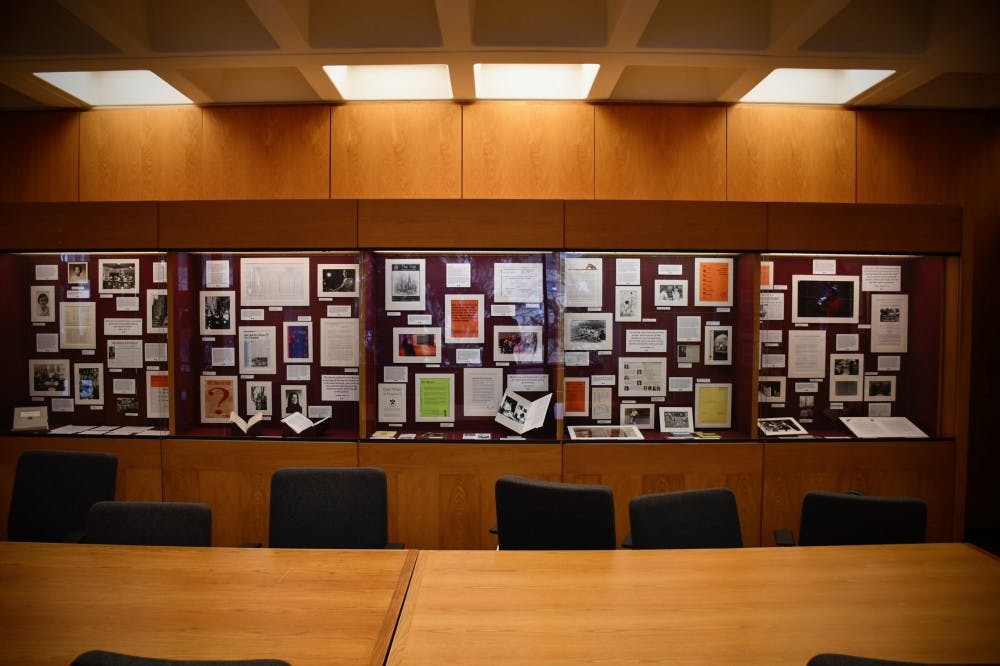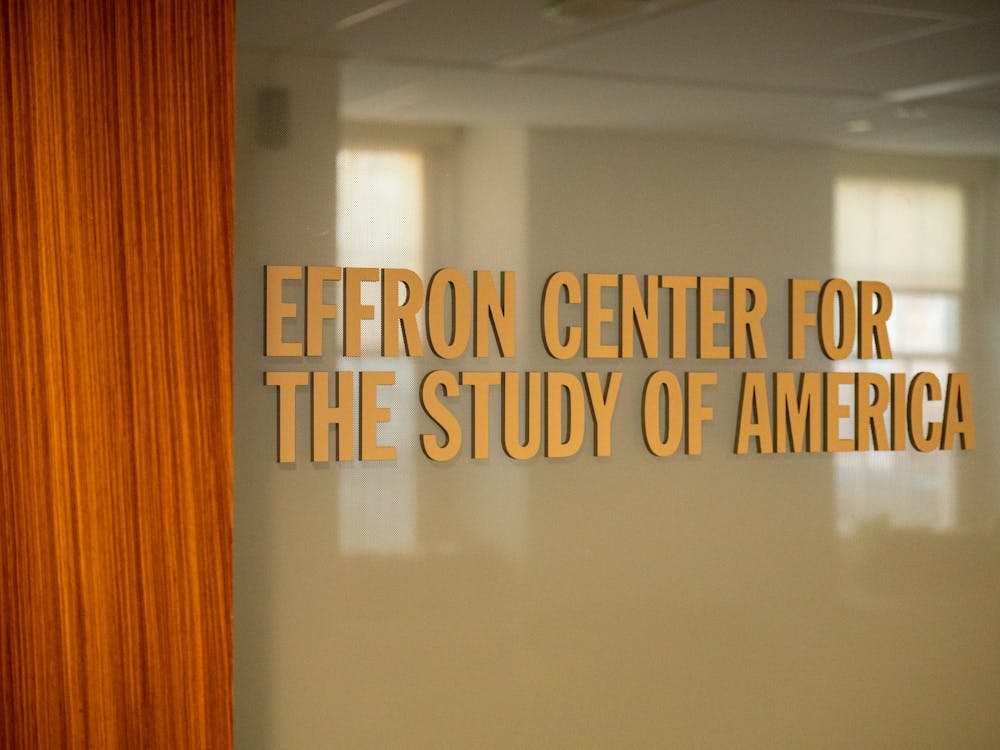In the side conference room of the Seeley G. Mudd Manuscript Library, visitors can find historical documents, pictures, and memorabilia since 1969, when the University first admitted women, displayed against a burgundy background.
For the exhibit, “Redefining Old Nassau,” Mudd librarians collected historical letters, publications, and objects that span the half-century of women at the University. The exhibit highlights women’s accomplishments in academics, athletics, and advocacy.
The exhibit also covers the accomplishments of women who studied at the University before coeducation was officially introduced.
For instance, in 1961, Sabra Follett Meservey *64 *66 became the first woman Ph.D. candidate admitted to the University’s graduate program. Three years later, T’sai-Ying Cheng *63 *64 became the first woman to earn a Ph.D. from the University.
The exhibit also highlights the controversy that surrounded the introduction of women to the University. Letters from dissatisfied alumni, such as Frederic P. Moore ’39, are displayed prominently.
“I fail to see where the acceptance of girls as undergraduates at Princeton is desirable or necessary,” Moore wrote. “The turn of events at Princeton is somewhat nauseating to me.”
The exhibit also features an article published in The Daily Princetonian, in which then-University president Robert Goheen ’40 *48 said that “co-education is inevitable” in an interview he believed to have been off the record.
“The first case [in the exhibit] is the overall what led to the decision to go co-ed,” said Assistant University Archivist for Public Services Sara Logue. “It’s a very powerful tool to see what the mindset was at that time.”
Other sections of the exhibit are dedicated to the many accomplishments of women at the University post-coeducation. One section is devoted to the successes of women athletics, noting that tennis, squash, crew, and field hockey were “the first intercollegiate programs offered to women in 1971-72.”
“I’m really glad we focused on that,” Logue said. “They are really successful and I think it’s important to draw that out.”
Additional sections of the exhibit emphasize the intersections of race and sexuality in women’s experiences at the University and celebrate the advocacy efforts undertaken by University women.
The exhibit also highlights University women’s struggles and the push-back that sometimes inhibited progress. An additional glass case focusing on the Graduate College describes an issue in 1969 when women at the University became concerned about sexual assault in the parking lot and closed the lot as a result.

One response letter featured in the exhibit dismissed the issue in its entirely, saying, “supposedly the purpose is to protect our nubile wenches from sexual assault ... it is doubtful such a danger exists.”
The final section of the exhibit, on the south wall, highlights organizations founded by women at the University, namely the Women*s Center.
A log from 1972 describes the meeting in which the Women*s Center was formally named.
“It’s neat to see how the organization has grown over time and what women have brought to campus not just in academics but also in their extracurricular organizations,” Logue said.
According to Logue, the exhibition was launched in October of 2018 and is planned to run through Reunions. The exhibit is open to the public.
Special Collections Assistant April C. Armstrong, who helped coordinate the creation of the exhibit, did not respond to request for comment. Director of the Women*s Center Amada Sandoval *00 had not commented by the time of publication.








